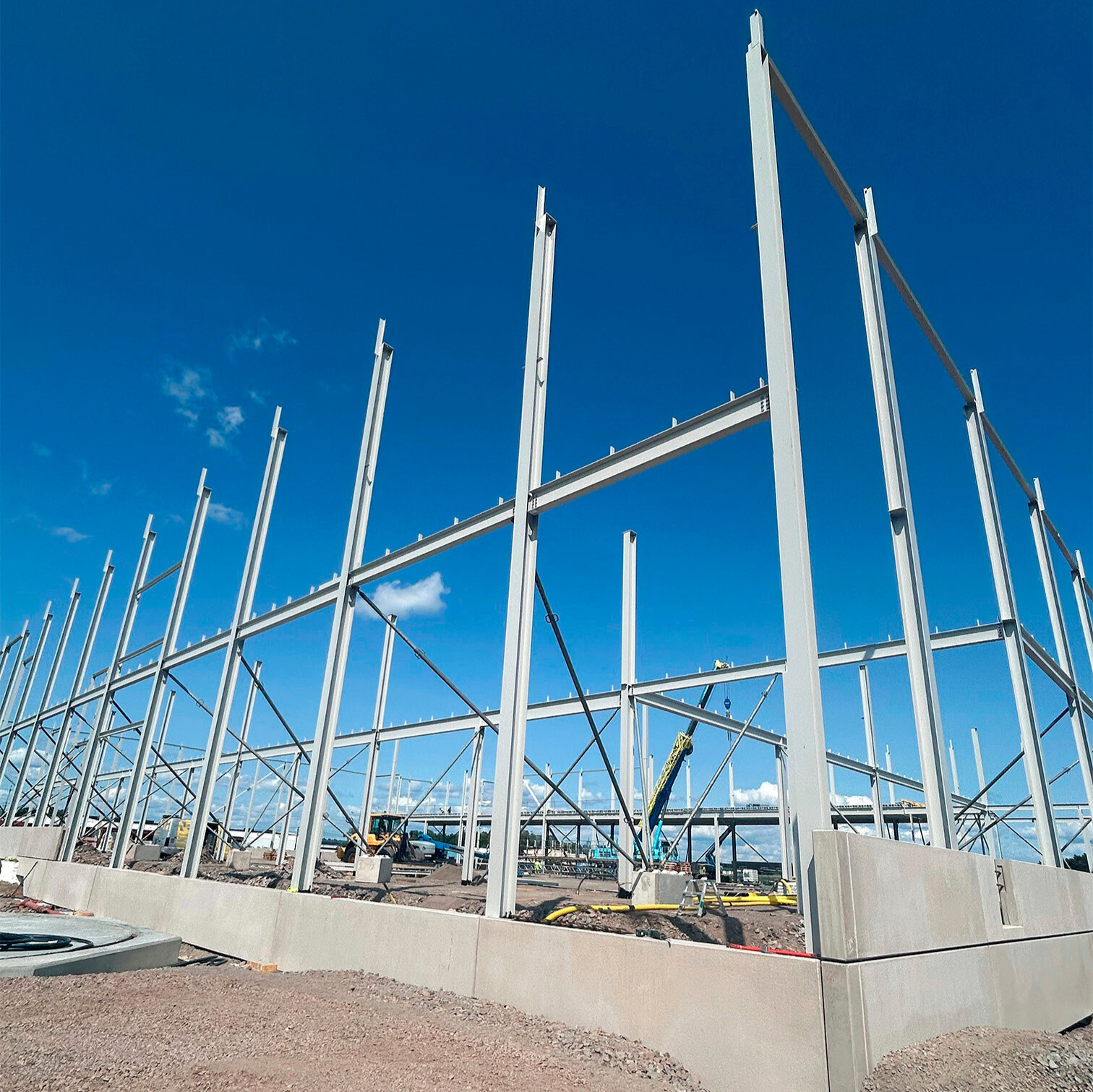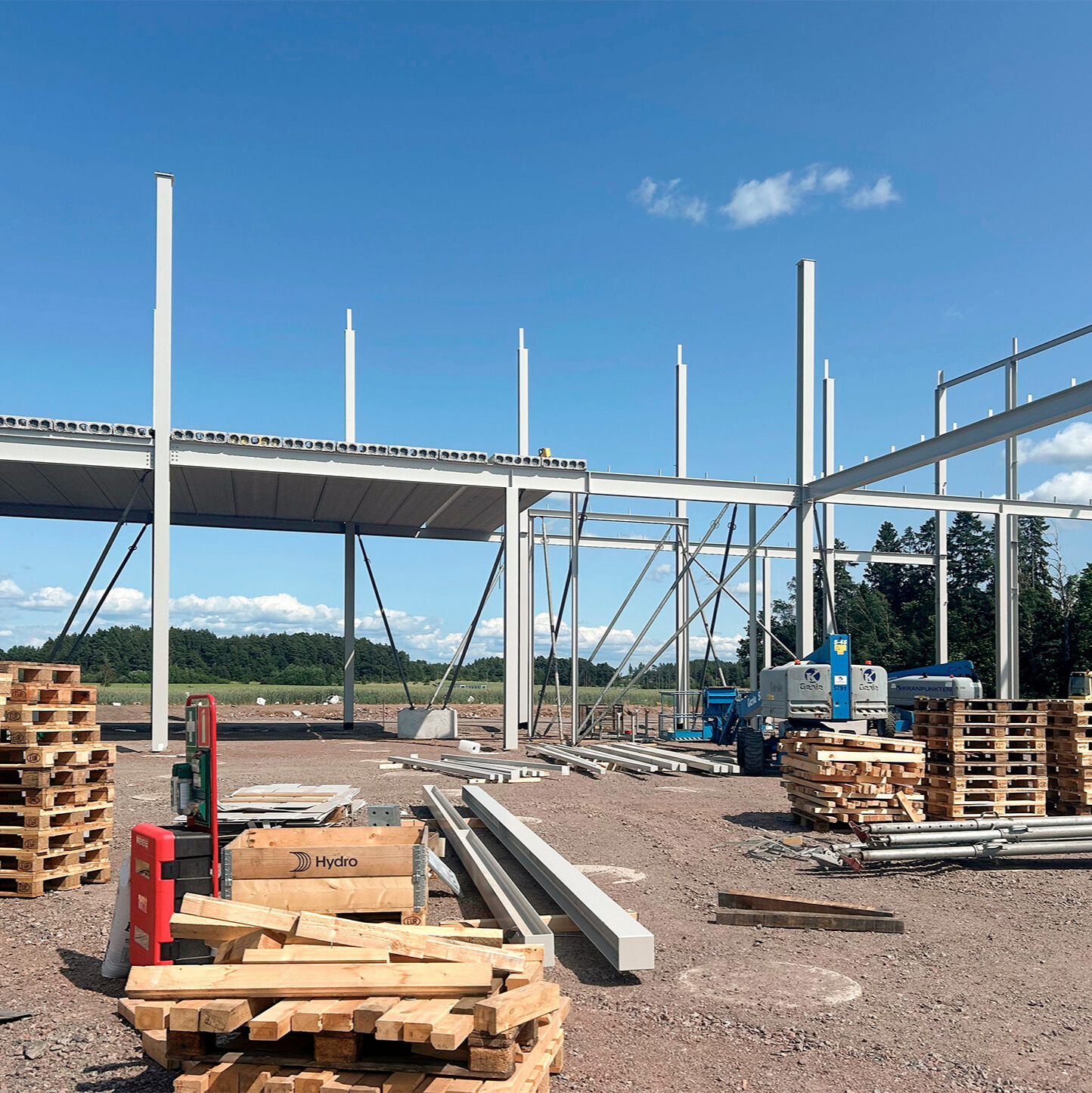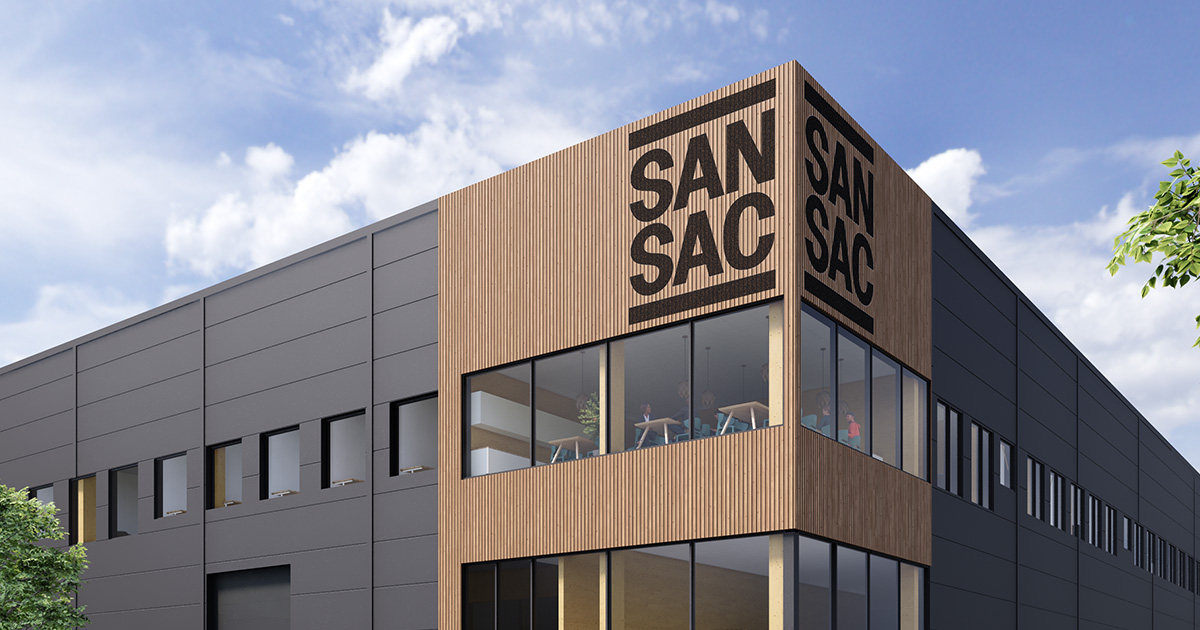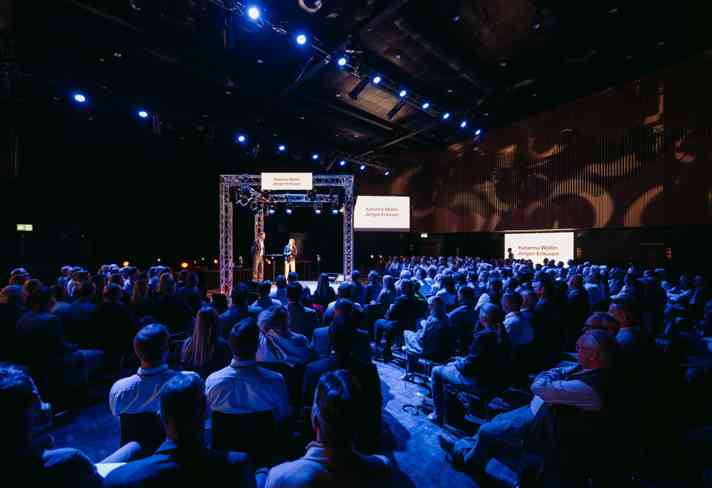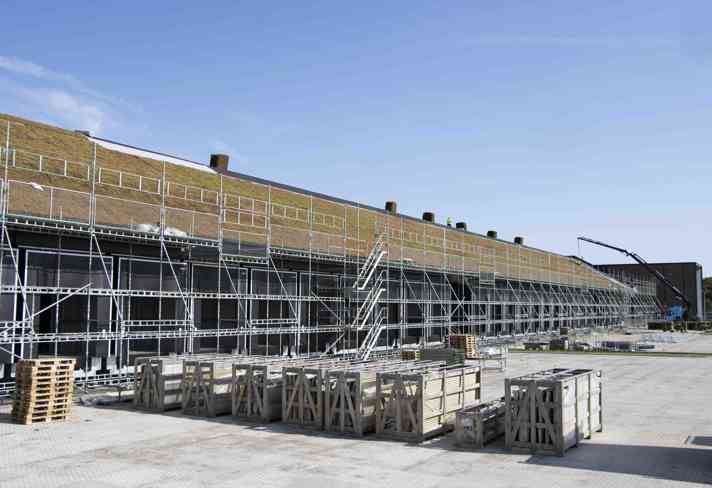Good steel makes a difference – how we build sustainably in Linköping
In our new development at Mappen 4 in Linköping, we are investing in innovative and sustainable steel solutions. By combining reused columns and scrap-based steel, we can reduce the building’s overall climate impact.
At the Mappen 4 property in Linköping, we are constructing a logistics facility for San Sac AB. The building will cover 10,000 sqm and is scheduled for completion in 2026. The project is being certified according to BREEAM with a rating of Excellent as well as NollCO₂, with a strong focus on climate-smart materials. One area where we have taken significant steps forward is steel – a material well suited for several of the main elements in a logistics building, and where we now clearly demonstrate how climate impact can be reduced.
Five of the building’s load-bearing columns are reused. After being dismantled from their previous location, they underwent thorough quality control by Stena Stål before gaining a new life in our project. The remaining columns and beams in the structure consist of nearly 100% scrap-based steel, which has a significantly lower climate footprint compared to primary raw material.






